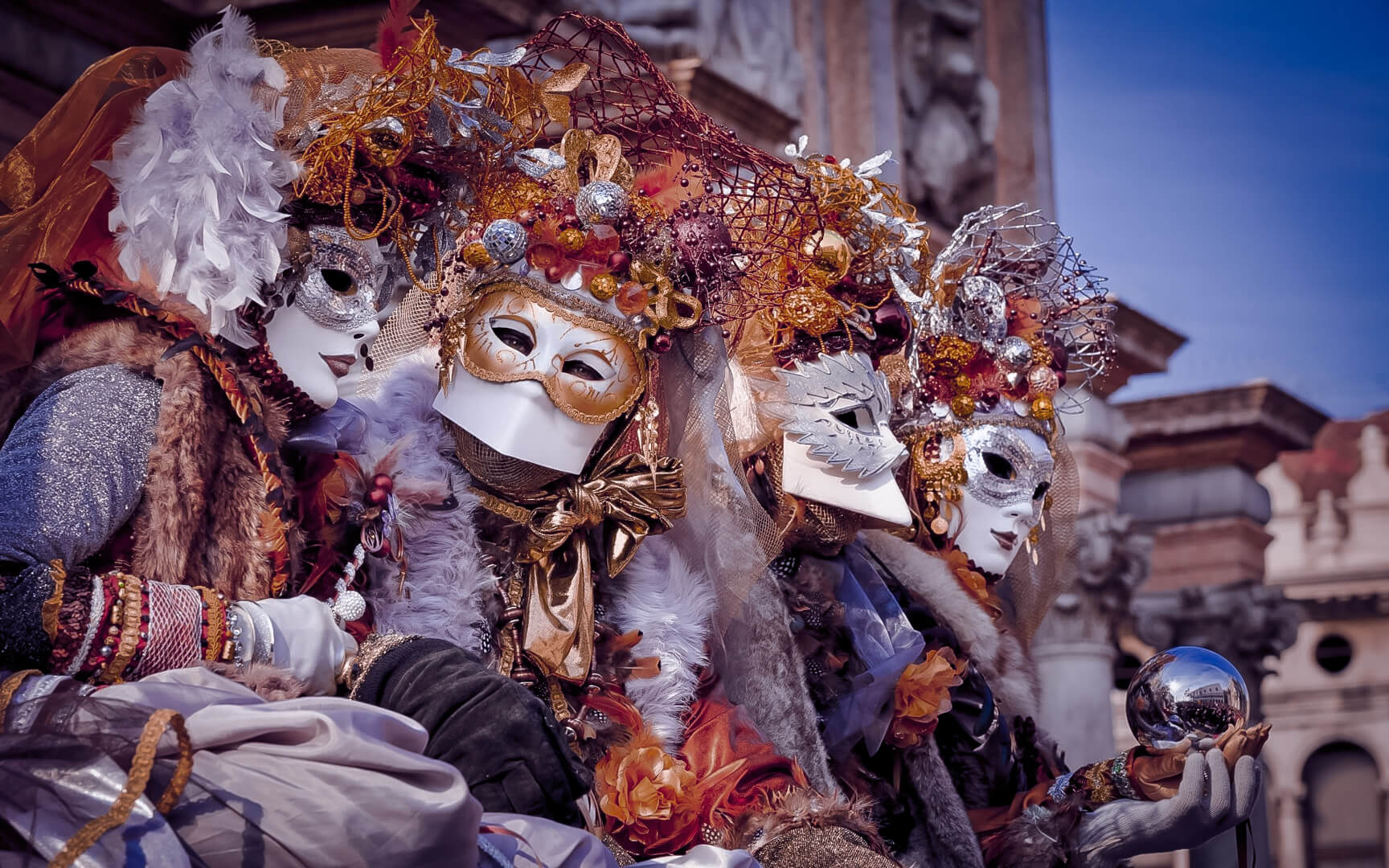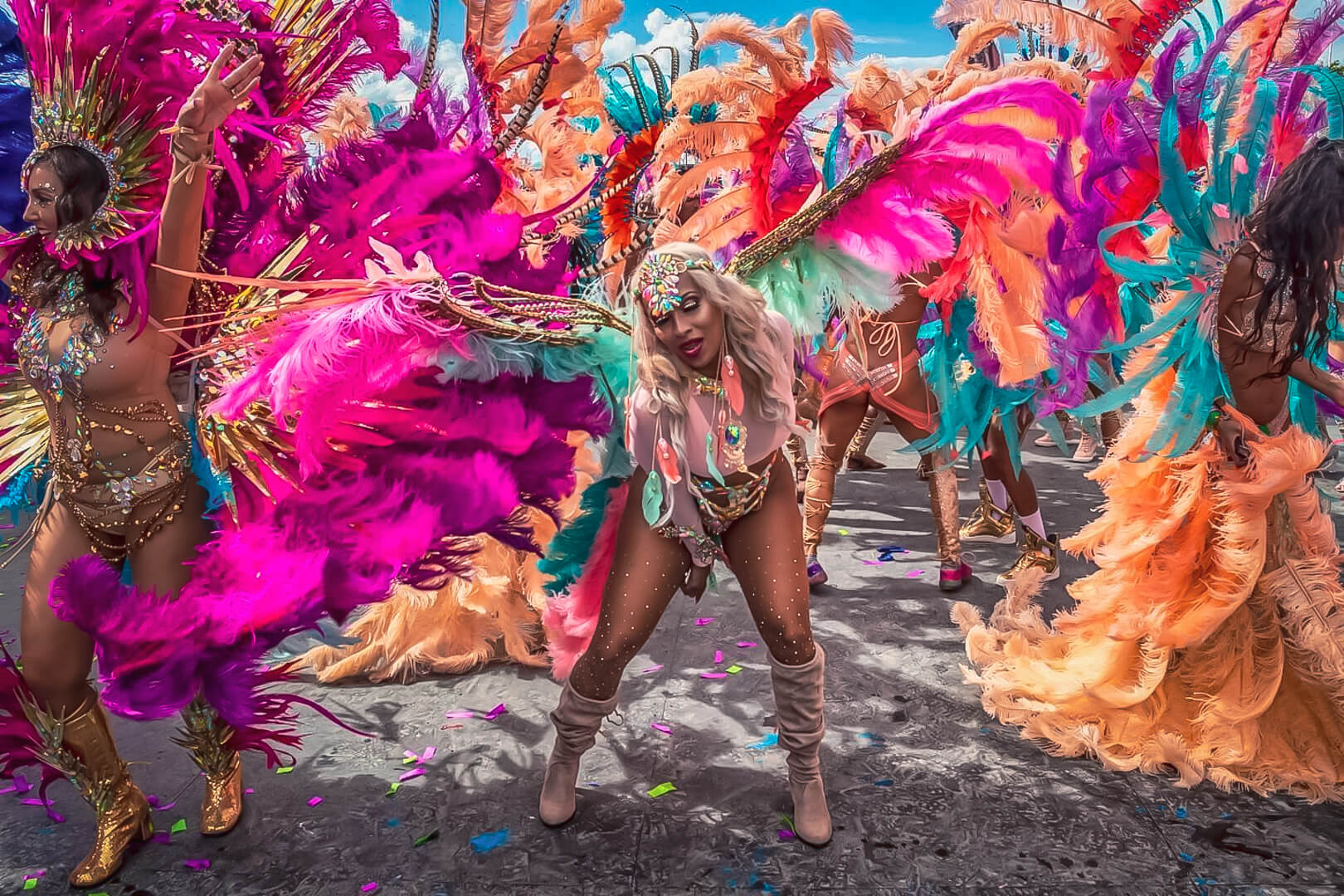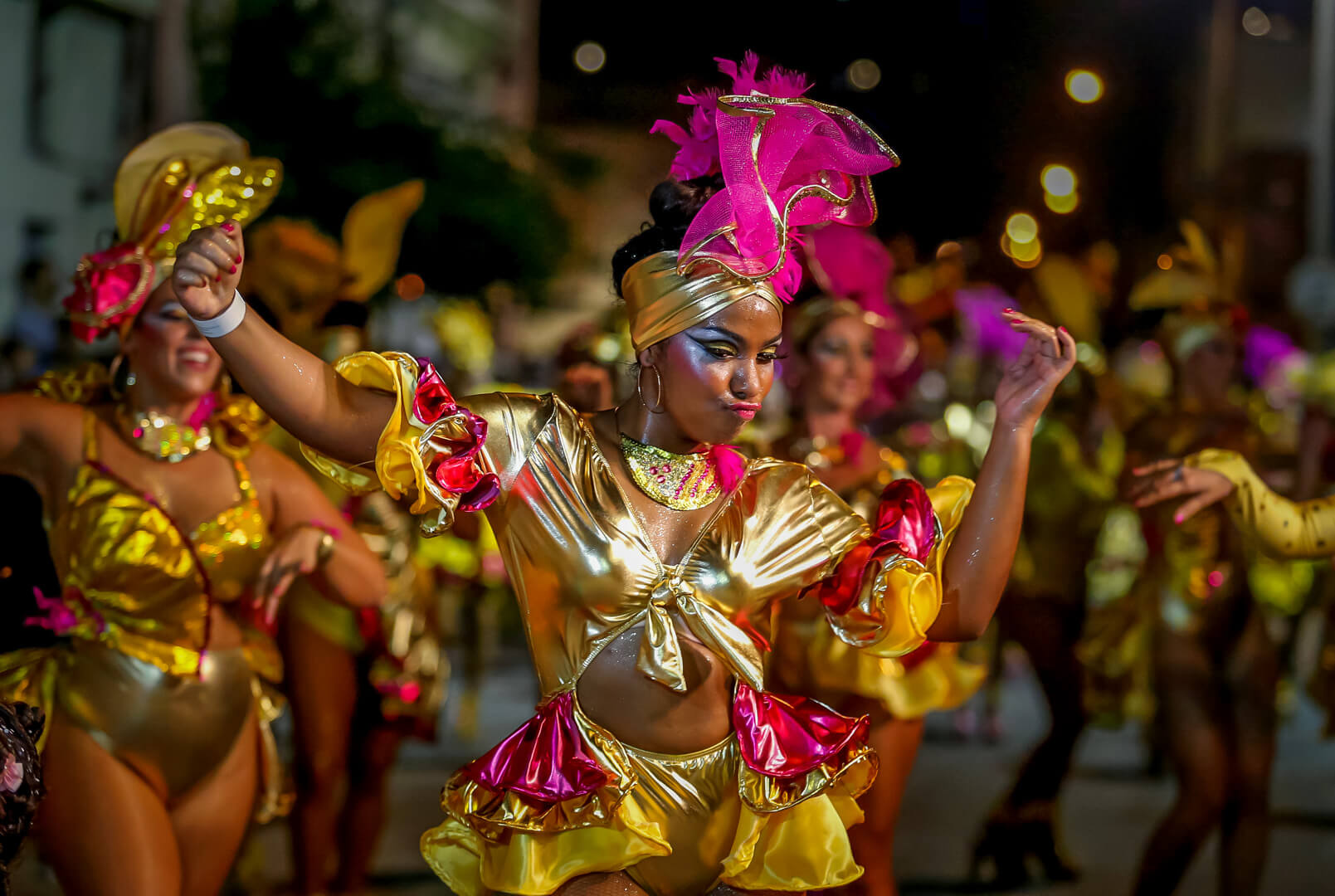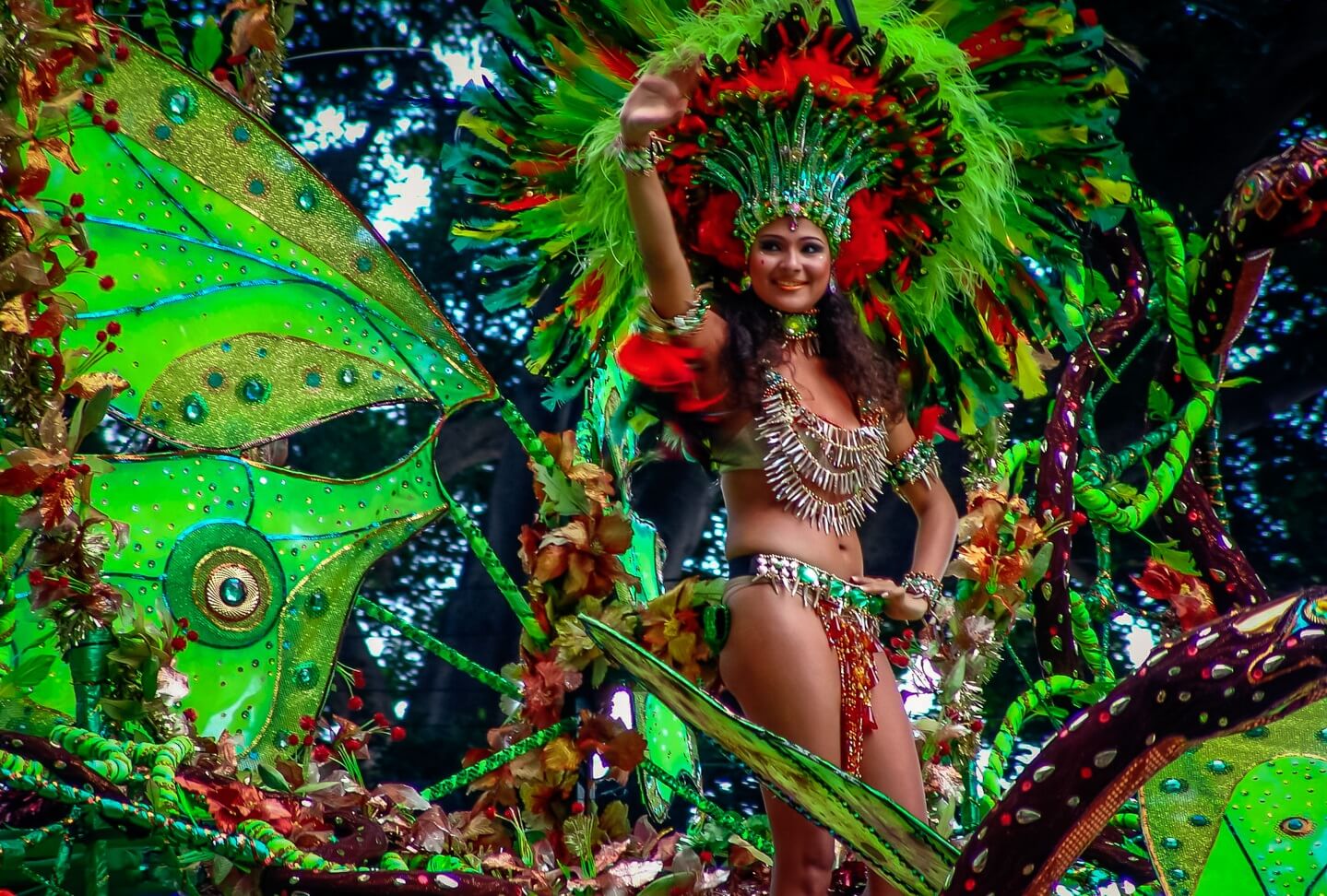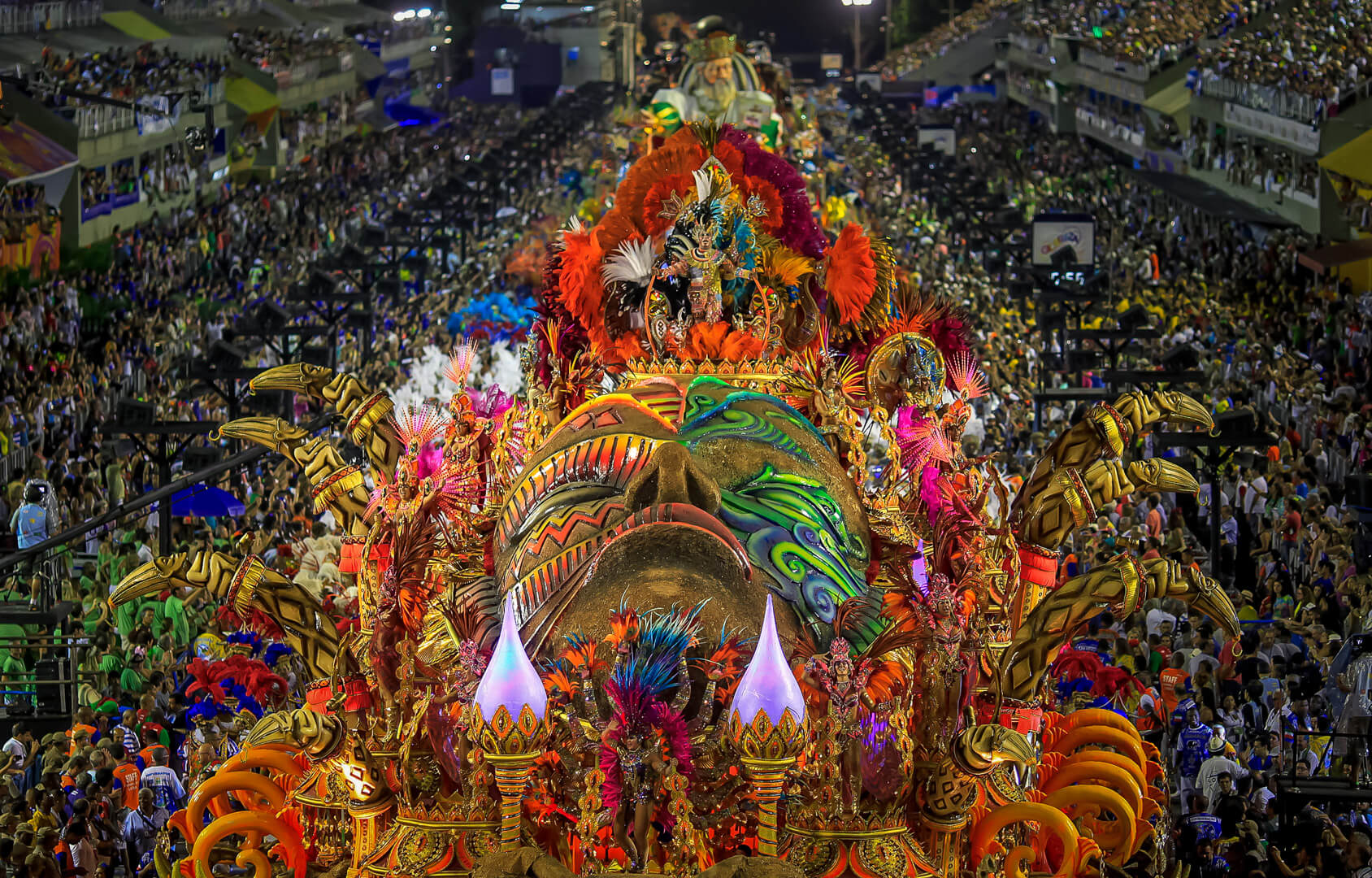Table of Contents
Get ready to be amazed as we virtually travel to discover the great beauty and mysterious appeal of the 10 Best Carnivals in the World. These are vibrant eruptions of joy, expressions of time-honored practices, and throbbing monuments to cultural worth, not just entertainment value.
Our trip starts on the magnificent canals of Venice, Italy, where the fun Venice Carnival is observed. Here the city becomes a haven of masked revelers, their extravagant attire and captivating faces cloosing them in anonymity. The ethereal sight will enthrall you as you negotiate the maze-like canals; a bygone age brought to life in a symphony of colors and mystery.
Then we set for a journey to Port of Spain, Trinidad and Tobago, where the vibrant Port of Spain Carnival brings the Caribbean alive. Let the seductive sounds of calypso and soca captivate you since gorgeously dressed masqueraders paint a rainbow of colors on the streets. The seductive intensity of the air invites you to join the exuberant throng and lose yourself in the fascinating celebration.
From the tropical areas, we go south into the fascinating city of Montevideo, Uruguay. The streets become a brilliant painting during the Montevideo Carnival. View the murgas’ riveting presentations, which combine comedy with social critique. Together with the flashy clothing, the explosive intensity of the music produces a visually arresting and psychologically interesting spectacle.
Our journey changes significantly as we arrive in Rijeka, Croatia and see the noisy Carnival. Get ready for an exciting but bold occasion. Here showy clothing is turned into strange animals and the throbbing beats of traditional wind instruments create a soundtrack that is both ecstistically exciting and very beautiful. Get ready to let go of your restrictions and welcome the free attitude of this special event.
As we keep headed north, a major change is ahead. Celebrated in Quebec City, Canada, the Quebec Winter Carnival is a show of ethereal magnificence Imagine a winter paradise complete with majestic ice castles and exquisite snow sculptures glittering in the cold winter light. While savoring delicious local cuisine and amazing winter sports, really appreciate the breathtaking scenery.
We next cross the border into the United States, where the well-known New Orleans Carnival—infused with Mardi Gras—awaits. As brilliantly decorated vehicles parade through the streets, assaulting onlookers with beads and trinkets, sink yourself into a symphony of joyous revelry. Jazz music’s lyrical melodies permeate the air and enthralls you with their addicting pleasure.
Our trip leads to the Canary Islands, home of the Santa Cruz de Tenerife Carnival. See the hypnotic fusion of Spanish flare and tropical energy that marks this remarkable event. Dynamic dance moves, great music, and intricate costumes taken together create an engaging presentation that is visually pleasing and culturally educational.
We then set out over the blue Caribbean Sea for the energetic city of Mazatlan, Mexico. The Mazatlan Carnival opens with a riot of colors, brilliant fireworks, and time-honored traditions. As finely decorated boats float across the streets, spectacular fireworks light the night sky. Take in Mexico’s unique cultural fabric, where modern celebrations mix peacefully with age-old customs.
Our journey ends at the ancient Brazilian city of Rio de Janeiro, where the internationally known Rio de Janeiro Carnival reaches a wild pinnacle. Get ready to give in to the samba’s unrelenting pace—a throbbing pulse guiding this unique celebration of life. One wonders at the amazing dancing, colorful costumes, and contagious energy of the samba schools. See their remarkable genius. The junction of passion, creativity, and unfettered excitement produces an amazing show that will silence you.
Starting this virtual journey will help you to fully appreciate the 10 best carnivals throughout the globe. Let the time-honored customs, amazing colors, and hypnotic rhythms take you to a world of cultural inquiry and pure enjoyment.
Venice Carnival: Unveiling Venice’s Masked Marvels
Venice Carnival, an annual event that captivates hearts and sparks imaginations worldwide, is a centuries-old legacy hidden behind grace and mystery. Held in the magnificent embrace of Venice, Italy, this enthralling event reveals a magnificent tapestry of art, culture, and history that leaves an everlasting impression on anyone who sees its grandeur.
Venice Carnival has its roots in the 12th century, when the city was a bustling trade hub and a cross-roads of many civilizations. It was designed as a time of approved indulgence and merrymaking before the austere season of Lent, which marks contemplation and fasting in the Catholic calendar. Venice Carnival developed throughout time into an amazing event praised for its lavish celebrations, well made masks, and elaborate costumes.
As Venice Carnival becomes an amazing event, the city of Venice becomes a theatrical stage full with fascinating performances, colorful parades, and seductive masquerade events. The celebrations are set against the fascinating background of Venice’s old buildings, winding canals, and lovely bridges. As each street pulsates with a kaleidoscope of colors, the air is filled with mesmerizing music and an exciting environment envelops inhabitants and guests.
One of the most seductive attractions of Venice Carnival is definitely the brilliant selection of masks that cover the features of revelers. These masks, which are frequently created by skilled artists, exude an air of mystery and excitement about the occasion. Historically, masks have been a strong emblem of social equality as they enable individuals from different backgrounds to interact and celebrate without revealing their actual identity. From the finely crafted feathered works to the elaborately sculpted Venetian masks, every mask serves as a storytelling tool expressing the wearer’s unique character.
As you negotiate Venice’s serpentine lanes during Carnival, you will find a wealth of fascinating events and activities waiting you. Featuring gondolas covered in vivid decorations and people dressed in extravagant costumes, the famous Grand Canal is turned into a spectacular theater for amazing boat celebrations. Street artists and musicians entertain the enthralled masses, while lavish dances take place in historic palaces, returning visitors to the age of grand Venetian masquerades.
Venice Carnival appeals to the taste as well. Traditional Venetian food is the main focus of the celebrations; palates are delighted at every turn by mouthwatering delicacies such fritole (sweet fried pastries) and galani (crispy fried pastries). Lively cafés and restaurants become vibrant hubs of activity as both residents and visitors converge to savor the tastes of Venetian cuisine and pay a compliment to the festive attitude.
Venice Carnival’s basic character is unchanged even if it has surely changed throughout the years. Still a vibrant celebration of Venice’s ongoing individuality, unfettered inventiveness, and creative expression. Visitors are encouraged to enter a world of fantasy and magic; the lines separating reality from imagination are softly blurring.
Port of Spain Carnival: Party in Paradise
In Trinidad and Tobago, the Port of Spain Carnival has become a cultural main event. For residents as well as guests, its vivid tapestry—weaved with throbbing calypso rhythms, sparkling costumes, and contagious joie de vivre—captivates Examining its rich history, beloved customs, and spectacular show on the streets of the capital city, this article explores the core of this fascinating celebration.
Port of Spain’s starting points Originally brought to Trinidad by French immigrants in the 18th century, carnival customs originated here. Over time a unique fusion evolved. European love of masquerade parties and merriment mixed with the vivid music, dancing, and concealing techniques brought by enslaved Africans. The vibrant carnival we know today was born from the cross-pollination of civilizations.
Resilience, creativity, and unbridled enthusiasm that define Trinidad and Tobago permeate every element of the Port of Spain Carnival. Both of which have roots in African customs, the hypnotic steelpan music and the contagious calypso tunes give the festivities their rhythmic pulse. The magnificent costumes the masqueraders wear—which include feathers, sequins, and glittering decorations—showcase their creative energy. Frequently inspired by mythology and folklore, the complex mask designs provide even another level of visual appeal.
As February draws near Port of Spain is bursting with exciting expectation. As masqueraders—dressed in extravagant costumes—parade around the city, it becomes a kaleidoscope of color and music. The contagious enthusiasm of the “jump-up” festivities mixed with the rhythmic thrum of steelpan ensembles, feathers and sequins sparkle in the sunshine.
Among the flimsy masses are the amazing moko jumbies. Towering above the celebrations, the elegant motions of these stilt-walkers enthrall all those who see their craft. Another fascinating feature are the “ole mas” communities. Through their unusual, sometimes satirical costumes, which reflect their inventiveness and social criticism, these groups add a dimension of humor and social awareness to the celebrations.
Clearly the height of the Port of Spain Carnival is the Parade of Bands. Hundreds of masqueraders carefully arranged into bands walk the streets. Every band shows their own unique theme and wardrobe choices. Leading the charge are the King and Queen of the Band, who are brilliant in costumes weighing an amazing weight and are monuments to the passion and workmanship of the craftspeople. This show is a visual spectacular, a great explosion of color, creativity, and cultural expression.
The Calypso Monarch tournament adds even another level of cultural value. The core of Trinidad and Tobago, Calypso music has lengthy history of social and political criticism. Often addressing national relevance, the Calypso Monarch competition gives gifted singers a stage to showcase their lyrical ability and humor as they perform their calypsoes. Passion and charisma abound in their performances; they enthrall viewers and help to sustain the core of social discourse.
Port of Spain. Carnival is a vivid tapestry spun from Trinidad and Tobago’s rich history and cultural customs, not just a celebration. It is a kaleidoscope of contagious energy, music, and color—a sensory experience unmatched. The kindness and warmth of the Trinidadian people, who make guests feel like natural participants of this amazing festival, accentuates the experience even more. Clearly, long after the last calypso, the sensory memory of the mesmerizing performances, the brilliant costumes, and the throbbing rhythms will linger.
Montevideo Carnival: World’s Longest Party!
The Montevideo Carnival offers a riot of color, music, and dancing right in Uruguay’s city to mark an annual spectacle. Rooted in Uruguay’s varied history, this energetic celebration offers an amazing window into the nation’s culture. Together, infectious rhythms, vibrant costumes, and a dynamic setting create an incredible event—a celebration of Uruguay’s identity and passion.
This great celebration takes place concurrently as summer in the Southern Hemisphere draws to an end in late February or early March. Local troupes, or comparsas, take to the streets participating in a series of amazing parades and displays, transforming the city into a hive of activity. With their unique style, meticulously planned dance movements, and individual musical compositions, each comparsa tries to outdo the previous in an amazing display of creative ability.
One of the most magical features of the Montevideo Carnival is the Desfile de Llamadas, a fascinating procession commemorating Afro-Uruguayan history and culture. From its origin in the latter part of the nineteenth century, an enthralling musical style marked by the seductive sounds of African drums, the candombe, has been a driving force behind this procession. Walking throughout town in their exquisite dresses and elaborate headpieces, the comparsas radiate sophisticated grace. As the pulsing drum beat permeates the air, they create an entrancing environment that echoes over the streets.
The Murga, a distinctive kind of musical theater highly valued in Uruguayan society, is one of the main events of the Montevideo Carnival. Social critique, humor, and satire all help to define the captivating performances of murga troupes. With their flamboyant costumes, facial paint, and large caps, these actors really come to life like carnival spirits. Often utilizing clever lyrics to ridicule political individuals and societal issues, they sing and dance as they travel amid the happy crowd, which makes people laugh and ponder.
Attending the Montevideo Carnival is an all-encompassing activity that allows you to get hands filthy, not just viewing. Join us in celebration! The ancient dance forms will be taught to you; you might join the chorus or use the comparsas to play the tamboriles, drums. The carnival’s essence is reflected in everyone’s great pleasure to participate in it. This celebration honors the friendliness and generosity of the Uruguayan people, who are always eager to show visitors about their rich past and present.
The Montevideo Carnival began in Uruguay’s colonial history when African slaves were brought there. The slow but consistent blending of their vibrant rituals with those of European immigration resulted in an immensely variegated celebration that best reflects Uruguay’s great tapestry of variety.
The Montevideo Carnival is must-see for anyone seeking a real cultural experience; its popularity has grown recently due to its universal appreciation. Thousands of people visit this amazing performance, which turns the streets and plazas of the city into vibrant platforms where the magic of the carnival may be seen. At the Montevideo Carnival, a vibrant celebration that will carry you to the throbbing core of Uruguay, savor a universe of unlimited joy.
Rijeka Carnival: Croatia’s Hidden Gem
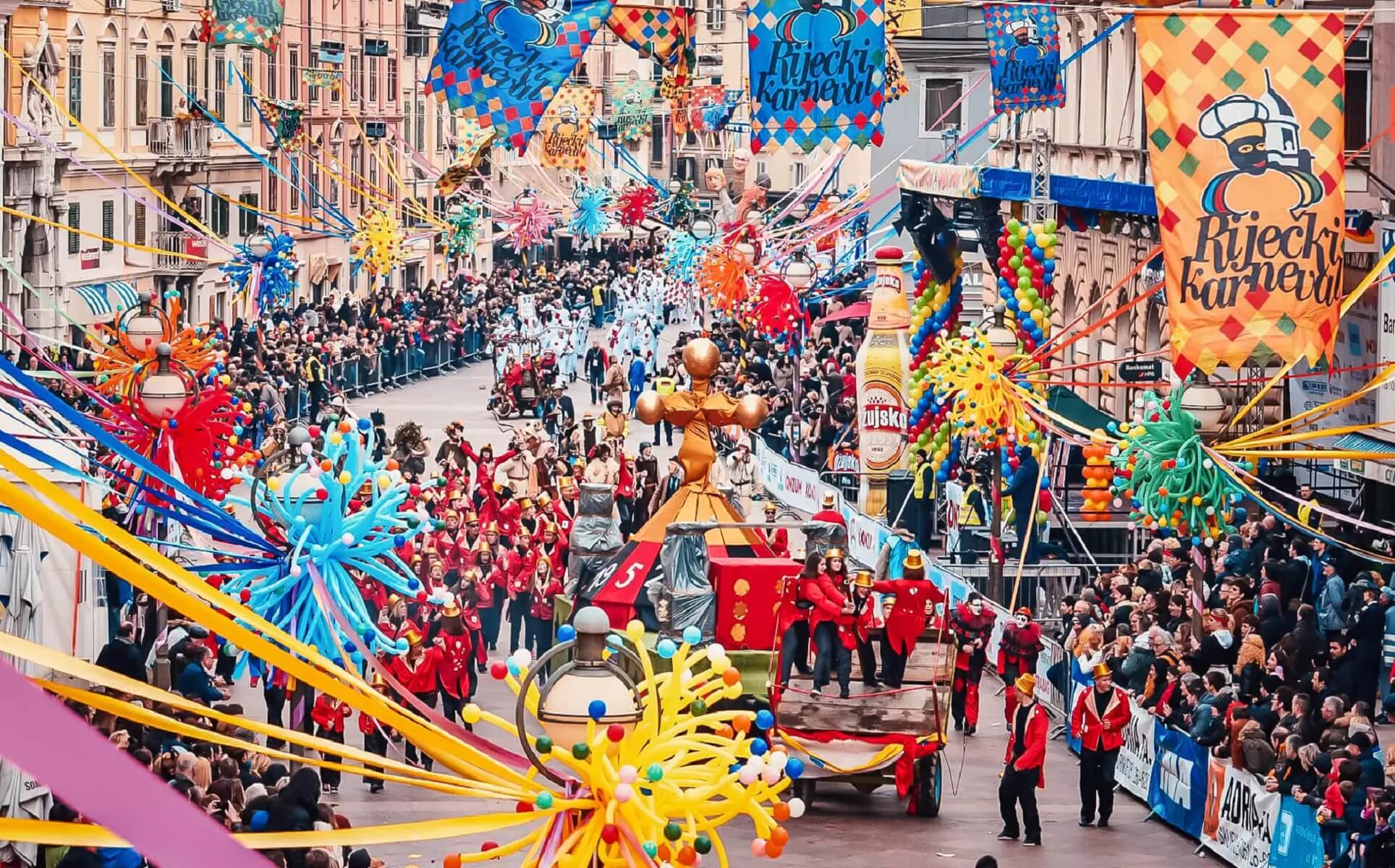
Every year the Rijeka Carnival transforms the city in central Croatia on the Adriatic Sea into a real kaleidoscope of color and festivity. This enchanted show has enthralled both residents and visitors, therefore confirming its reputation as one of the most energetic and amazing carnivals in Europe. Apart from the happy celebration, it reminds us of the centuries-long cultural tradition of the region.
Originally a means for the residents to release steam and enjoy life before the severity of Lent, the Rijeka Carnival has its origins in the 17th century. Over the years, the carnival evolved absorbing many different cultures until it grew to be the massive spectacular people experience today.
The major draw of the Rijeka Carnival is mesmerizing parades. Participants in these processions, carefully bedecked in a kaleidoscope of color, traverse the streets bringing to life an imagined universe of wonder. From mythical animals and historical figures to quirky characters and satirical portrayals of contemporary life, the costumes highlight the amazing vision and ability of the participants.
A trademark of the Rijeka Carnival is the look of the Zvončari. Those who wear sheepskins and have large horned masks believe these enigmatic people could fight evil spirits and bring good fortune in the next year. Their roots are in ancient pagan rituals, hence their presence serves to preserve the sincerity and great cultural relevance of the carnival.
Apart from the grand parades, festival attendees may find a great range of cultural events and performances emphasizing the artistic richness of the region. The city turns into a dynamic stage where local musicians, dancers, actors, and exhibitions may highlight their skills. Enchanting audiences and enchanting tourists, traditional folk dances, choral music, and compelling theatrical productions chronicle Rijeka’s legacy and history.
Crown gem of the Rijeka Carnival, the much awaited Battle of the Giants is The symbolic struggle of two massive puppets symbolizing virtue and evil captivates the crowd. The dramatic fight of the puppets captivates people of all ages, hence the crowd bursts into applause.
Though the Rijeka Carnival is the most significant annual celebration, this energetic city offers many more to see and experience. Rijeka, a city surrounded by magnificent mountains and the Adriatic Sea, promises beautiful landscape, historical monuments, and a dynamic cuisine scene. While wandering along the Korzo promenade or discovering the amazing Castle perched on a hilltop, visitors may appreciate the city’s gorgeous coastal restaurants offering great seafood.
The Rijeka Carnival is likely to be an unforgettable event with its vibrant atmosphere, varied cultural offers, and endless vitality. One is urged to totally embrace a world of uncontrolled happiness, artistic expression, and a celebration of life’s little pleasures.
Quebec Carnival: Witness Winter Wonderland
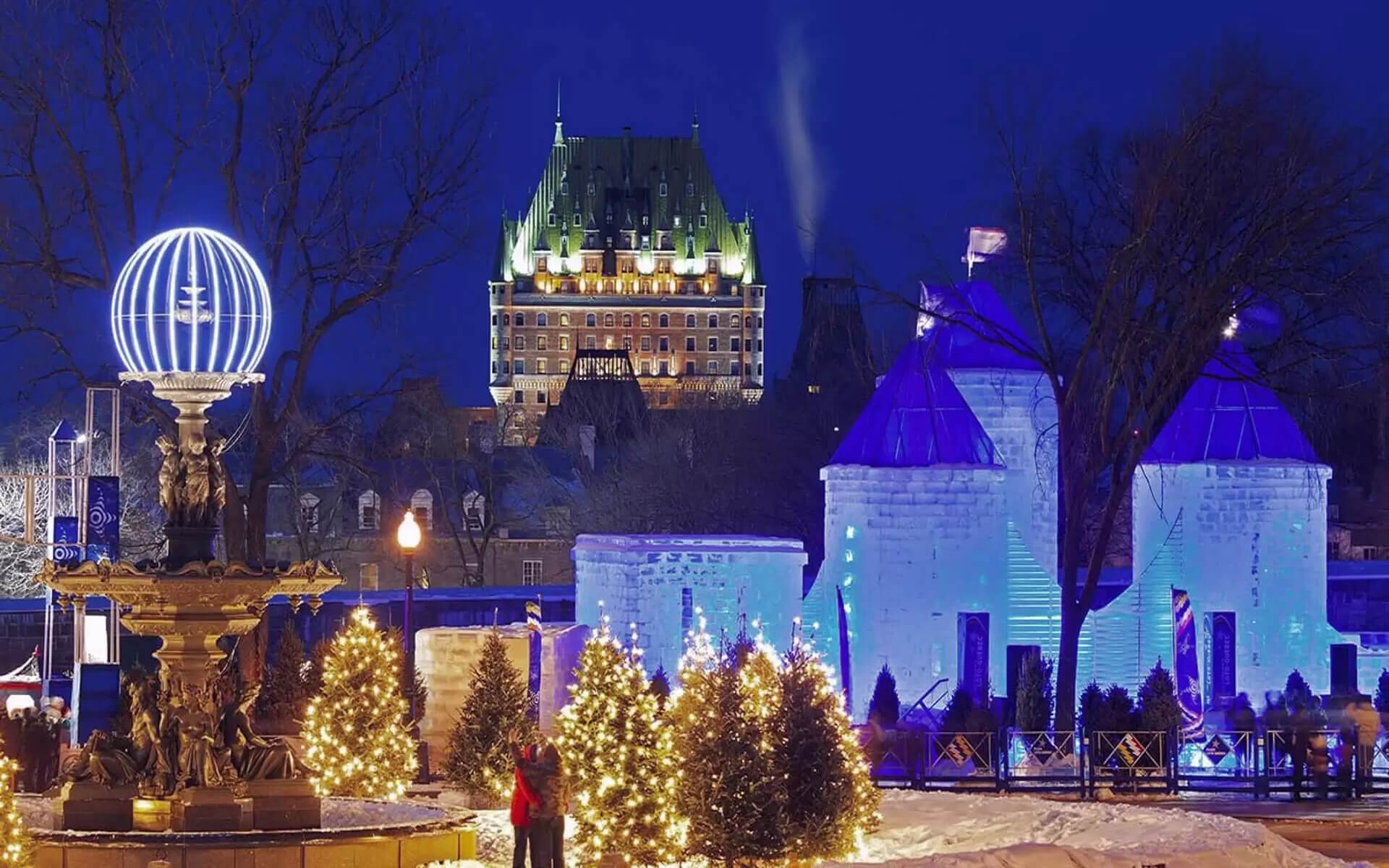
The Quebec Carnival is a yearly spectacular winter carnival held in Quebec City, Canada. Referred to as the “world’s largest winter carnival,” this amazing event brings residents and visitors from all around to enjoy the beauty and appeal of the winter months. Rising as a famous feature of the Canadian cultural calendar, the Quebec Carnival has a rich history, fascinating customs, and many exciting events.
When the city is blanketed with snow, the Quebec Carnival—a brilliant winter display—comes alive. Emphasizing the playfulness and charm of the winter season, the two-week event enthralls the emotions of participants. Snow slides and ice sculptures are among the amazing range of activities the carnival has that will definitely make guests in wonder.
Established in the late nineteenth century in response to Quebec City’s terrible winters, the Quebec Carnival helped the local residents find comfort and enjoyment among the very cold conditions. A small gathering of friends quickly turned into a magnificent winter celebration withstanding the test of time. The Quebec Carnival now honors its historical roots while also adding fresh ideas that enthrall viewers of all ages.
The amazing parade of the Quebec Carnival is among the most looked forward events. As participants fall onto the streets in vivid costumes, the white background of snow is set against a rainbow of color. The parade is distinguished by elegant carriages, flashy performers, and vibrant displays all of which add to the celebratory mood. The sights and sounds that make the Quebec Carnival a very unique event surround visitors in a sensory feast.
The Quebec Carnival offers a wide range of exciting outdoor sports that let participants welcome the winter. Among the many possibilities open to adventure seekers are ice skating on the frozen St. Lawrence River and snowmobiling along the slopes of surrounding mountains. The famous Bonhomme’s Ice Palace, a soaring construction built only of ice, honors the creativity and workmanship of the carnival organizers.
The Quebec Carnival is not an exception to the norm that no carnival experience is complete without the intake of great beverages. The event is a gastronomic feast with a wide range of delights meant to nurture the soul as much as the body. Sample traditional Quebecois food such poutine, tourtière, and maple taffy to savor the rich tastes of the area. Every mouthful carries you to the very center of Quebec’s gastronomic legacy.
New Orleans Carnival: Mardi Gras Madness
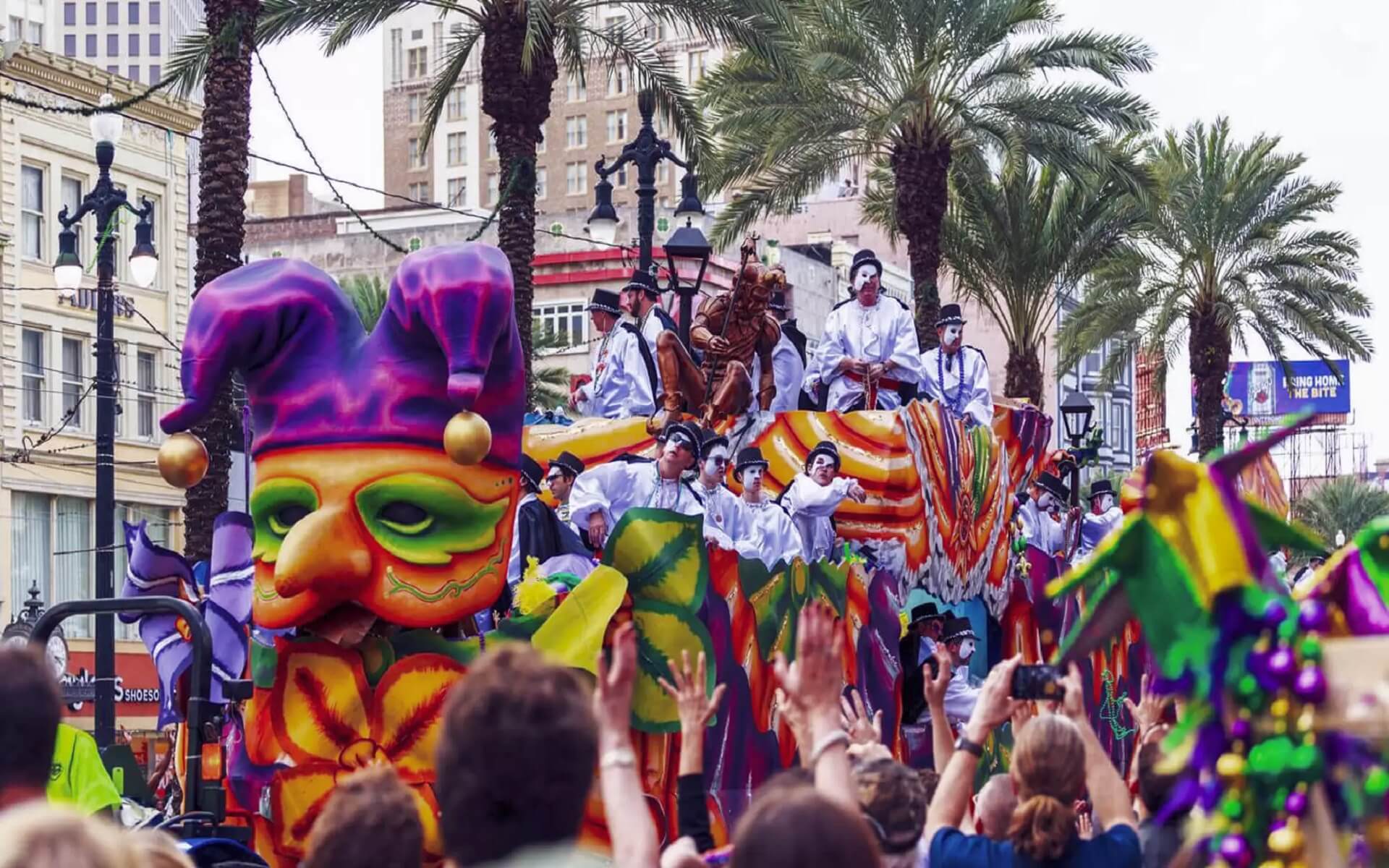
This vibrant, cultural, hedonistic celebration never ceases to astound us because it has been going strong for decades. The New Orleans Carnival embodies the spirit of this one-of- a-kind city from the vibrant costumes to the noisy parades.
French colonists brought their rituals and rites to the lovely city of New Orleans, where they evolved into the basis of the Carnival there. Originally observed to welcome spring in ancient Europe, the occasion was altered by the Catholic Church to fall before Lent.
The New Orleans Carnival, which runs for many weeks, features many varied traditions and events. The most fascinating aspect of the festivities are the parades meant to halt along the main streets. During these parades, members of several krewe organizations ride elaborately decorated floats. Every krewe, the hidden organizations in charge of planning and financing the parades, has distinct themes and symbols, therefore treating onlookers to a visual feast.
Wearing masks is one of the most fascinating features of the New Orleans Carnival. People could use masks to embrace anonymity and disguise their identity. The extravagant masks, which create a feeling of mystery and intrigue all around the festivities, have feathers, sequins, and brilliant colors. From the most simple eye mask to complex full-face designs, carnival would not be complete without masks.
The King and Queen are crowned exactly midway through the New Orleans Carnival. Selected among the krewes, these outstanding people capture the core of the celebration. The royal pair acts as procession marshals wearing extravagant ballgowns and diamond crowns. Viewers who have come to observe this age-old tradition up close will surely be amazed by the grandeur they offer to the occasion.
Without throws, the New Orleans Carnival is not whole. Along with miniature toys, gifts, and beads, the floats are tossed to the applauding audience below. Traditionally, when the floats pass in a procession, people stretch out and cry, “Throw me something, mister!” Both visitors and residents anxiously gather these vibrant and appealing throws to recall the Carnival by.
For many who call New Orleans home, the Carnival is about more than just the surface-level show. It honors community; tenacity; and cultural legacy. The event brings individuals from all backgrounds together, therefore promoting brotherhood and togetherness. The New Orleans Carnival captures the city’s relentless will to preserve its legacy exactly.
Centrally located in New Orleans, the Carnival is evidence of the city’s vibrant history, active present, and contagious delight. This celebration highlights the distinctive culture of the city from the vibrant costumes to the grand parades. The New Orleans Carnival is a sensory assault of customs and colors that will enthrall your mind and soul; it is an experience you will have with you always.
Santa Cruz de Tenerife Carnival: Unleash Your Wild Side
Held on the lovely Canary Island of Tenerife, the Santa Cruz de Tenerife Carnival is an amazing display of colour, music, and culture. Thousands of people from all across the globe visit this annual event to participate in the infectious energy and captivating atmosphere of what is generally acknowledged as one of the largest carnivals on Earth.
The Santa Cruz de Tenerife Carnival originated in the latter part of the 18th century as a small-scale street parade. With a wide range of events throughout the years, the occasion has evolved into a magnificent spectacle. Usually lasting several weeks, the carnival features most of the celebrations in February, right before Christians start Lent.
A trademark of the Santa Cruz de Tenerife Carnival are exquisite and showy costumes. Designing and building their costumes—which typically include vivid colors, feathers, and sequins—the players invest a lot of time and energy. The clothing, which are works of art in and of themselves, compete in spectacular arrays of color and design. From those of brilliant showgirls to those of legendary creatures, the costumes really reflect the spirit of the carnival.
Regarding the Santa Cruz de Tenerife Carnival, music is absolutely king. From merengue to salsa, traditional Canary Island music permeates the streets with its pounding rhythms. The appealing tunes of bands and orchestras abound in the air, beckoning attendees to dance and celebrate. The streets are alive with a carefree and vibrant energy as the sound of drums, horns, and guitars fills the air.
Apart from its audible and visual spectacle, the Santa Cruz de Tenerife Carnival is a gourmet feast. Vendors offering a range of mouthwatering Canarian delicacies swarm the streets. Among the local delicacies visitors could savor are mouthwatering grilled fish, pastries, and papas arrugadas—wrinkled potatoes. The carnival is a terrific venue to savor the enormous range of flavors that characterize the Canarian cuisine.
Apart from the music and parades, the Santa Cruz de Tenerife Carnival organizes several other events and competitions. Choosing the carnival queen—a honorable title bestowed upon the female participant most epitomizing the excitement of the celebrations—is the most crucial among them. The rivals for this prestigious title show their grace, elegance, and charm in beautiful dresses and lofty headpieces.
The great climax of the Santa Cruz de Tenerife Carnival is the symbolic burial of the Sardine, which marks the end of the celebrations. At this faux funeral procession, those in sorrow dress to bid farewell to a massive papier-mâché sardine. Everyone who witnesses it will never forget the sad scene created by fireworks, music, and dancing.
Celebrating Tenerife’s remarkable cultural legacy, the Santa Cruz de Tenerife Carnival is an unparalleled spectacular combining all senses. It fosters community and camaraderie by bringing guests as well as locals. The Santa Cruz de Tenerife Carnival, which showcases the creativity, energy, and joie de vivre of the residents, is something anybody seeking a once-in- a lifetime cultural event should not miss.
Mazatlan Carnival: Unleash Your Fiesta Spirit
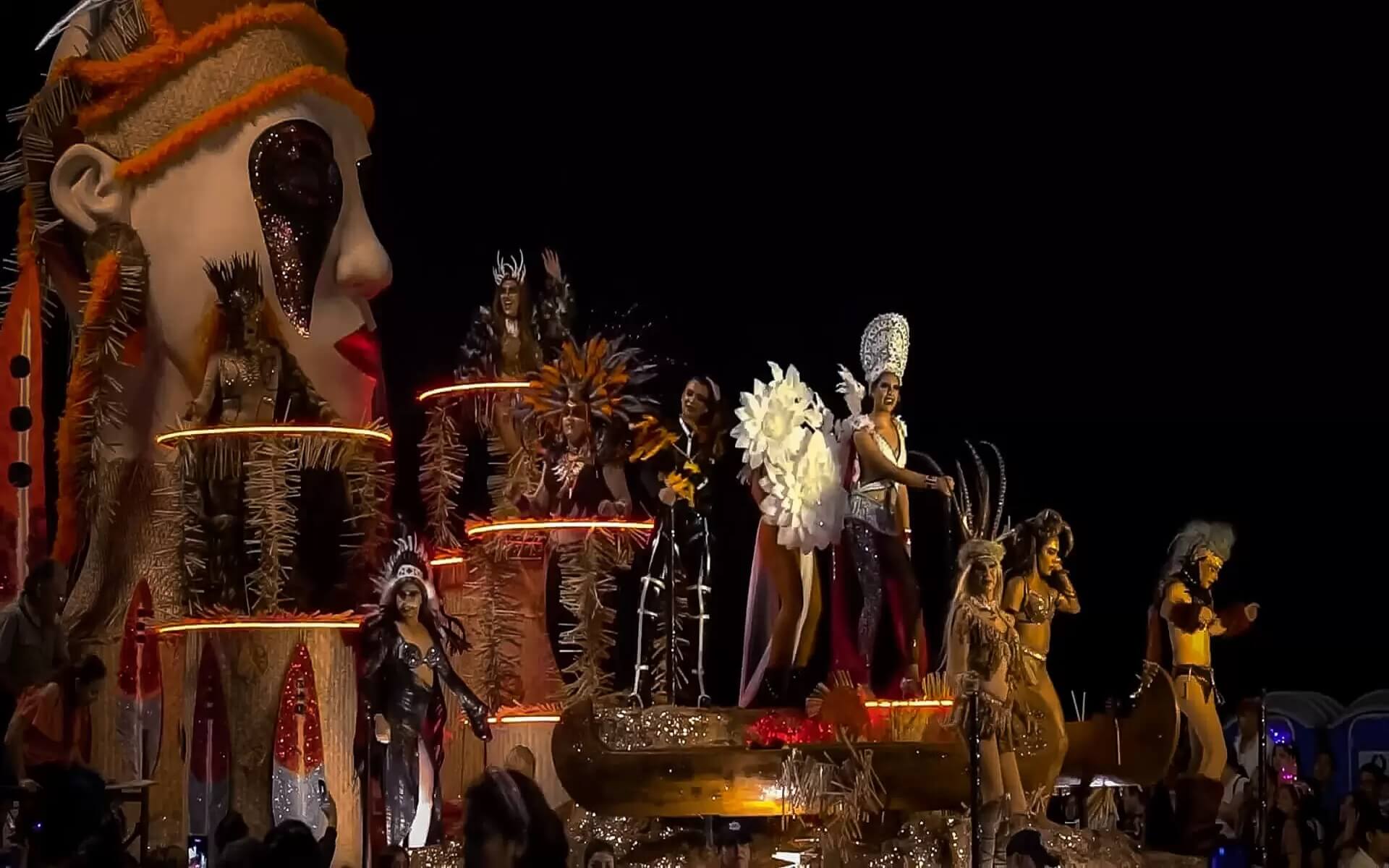
During the annual Mazatlan Carnival, Mazatlan, a coastal town in Mexico, is usually a swarm of activity. Inspired by the city’s rich cultural legacy, this world-class festival offers an amazing show drawing guests from all over.
Having been running strong since the seventeenth century, the Mazatlan Carnival is among the most remarkable and awaited events in Mexico. Following the magnificent coronation ceremony to name the Carnival Queen, a glittering procession throughout Mazatlan winds through the streets. .
The city becomes a rainbow of sounds and colors when the sun sets and the lights turn on. The great Mazatlan Carnival, which honors old Mexican customs, is put up by music, dance, and theatrical presentations. The contagious laughter of revelers, the hypnotic melodies of classic music, and the throbbing rhythms of strong mariachi bands abound on the streets.
During the Mazatlan Carnival, the vibrant carnival troupes known as comparsas captivate spectators with their intricate costumes and hypnotic dancing techniques. Combining dance, acrobatics, and other performing arts, artists in these comparsas highlight their unique flair.
Every year the Mazatlan Carnival’s fresh theme helps to preserve its enthusiasm and uniqueness. From legendary animals to historical eras, the subjects highlight the cultural variety and originality of the Mazatlecos. The intricate costumes and floats, which fit the chosen theme, highlight the amazing workmanship and creative ability of the local artists.
Residents as well as visitors at Mazatlan Carnival may completely appreciate the great cultural variety of the city. People come to celebrate the gift of life during this period. Everyone feels as if they are a part of the act when endless delight and infectious laughter fill the air.
Just two of the many events and activities that comprise the Mazatlan Carnival are parades and street entertainment. There is something for everyone from musical events with well-known artists to gourmet pleasures that will thrill the taste receptors. Attending the Carnival Ball, another highlight, attendees dress properly and dance the night away in a gorgeous surroundings.
Moreover, the Mazatlan Carnival is not only a big celebration but also quite important for the local residents. Mazatlan’s emblem reflects the city’s respect of its community, history, and culture. The event benefits the economy of the city overall by attracting guests and supporting nearby businesses.
Basel Carnival: Drums, Floats, & Shenanigans!
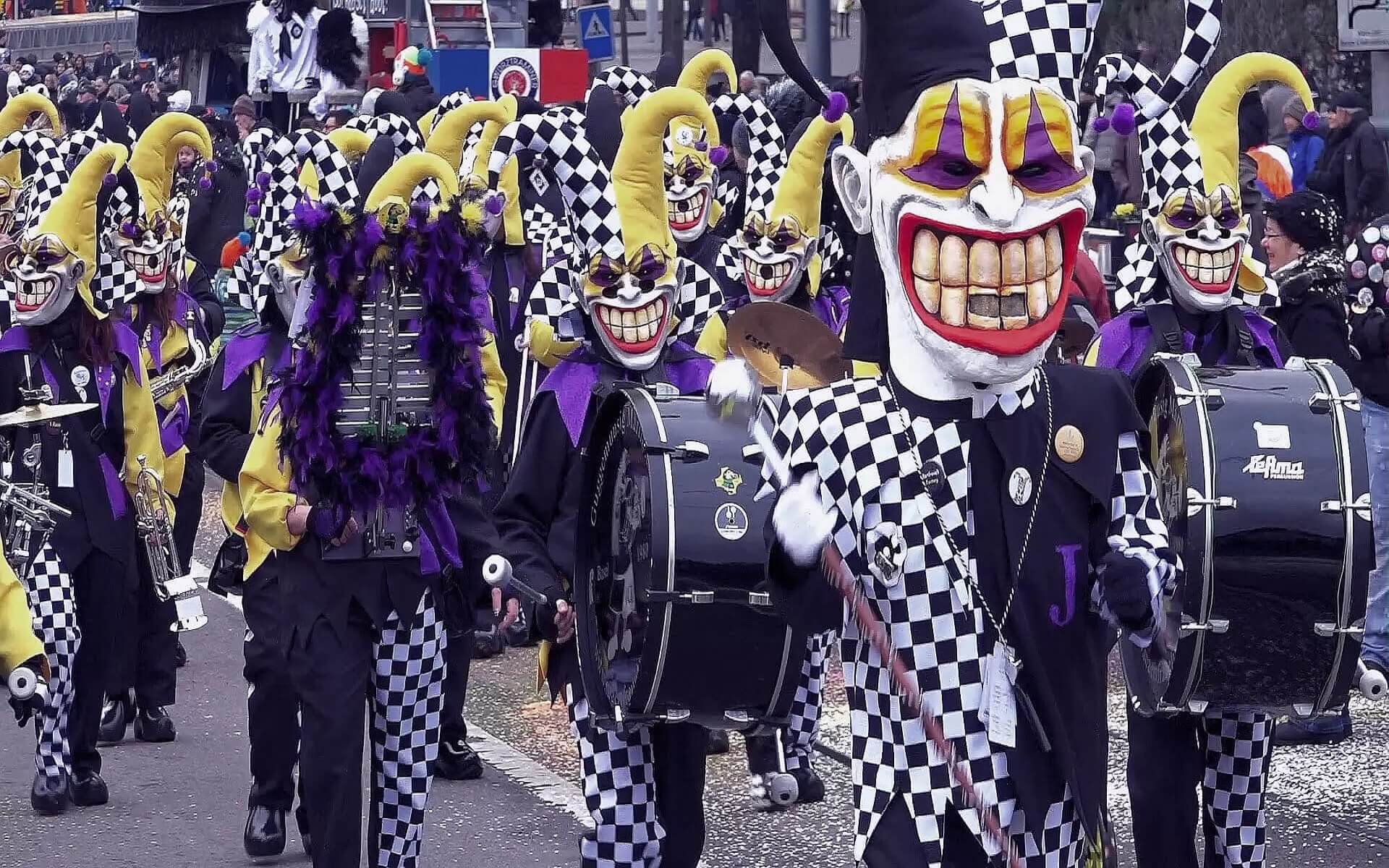
Every year, the charming Swiss city of Basel organizes the grand Basel Carnival—also known as Fasnacht. Rooted in indigenous customs, this vivid carnival offers an unmatched spectacle of color, music, and happiness. For the three days of the Basel Carnival, which transforms the city into a swarm of activity both locally and among visitors.
Originating in the Middle Ages, the Basel Carnival is among the most honoured and enduring carnival customs in Europe. Starting with the mesmerizing Morgestraich parade when the city’s lights go off and the streets are lighted by lanterns, the carnival opens on Monday after Ash Wednesday at four in a morning. Walking in the darkness with beautifully decorated lanterns produces a magical environment that perfectly reflects the special appeal of the carnival.
The Guggemusik band performance is a main highlight of the Basel Carnival celebrations. Sometimes enthusiastic players playing a range of traditional instruments dress in odd outfits and establish these bands. Their stirring song fills the city and enthralls viewers with its irresistible energy. Every Guggemusik band presents a different style and repertoire, which gives the carnival’s musical atmosphere vivid and diverse.
The amazing costumes the Basel Carnival attendees don are among the most striking features of the celebration. Designed with great care, every participant’s clothing blends symbolic significance, individuality, and legacy. By dressing their faces in vibrant masks and intricate headpieces, carnaval attendees completely engage in the festivities. Sometimes created from exotic fabrics and with complex decorations, costumes like these enhance the visual magnificence of the event and provide a visual feast.
Cliquen—organized groups of people performing original and funny acts known as Schnitzelbänke—bring life to Basel’s streets during the Basel Carnival. Using an observant and frequently critical tone, satirical performances in the Basel, Germany dialect address political and social issues. As the Cliquen enthralls the audience with their dynamic performances, gripping storytelling, and keen humor, let laughter and delight abound in the carnival.
The Basel Carnival offers many more activities and sights than just the procession, music, and entertainment. Traditional food vendors at the fairgrounds might be offering mouthwatering delicacies such Zwiebelkuchen (onion pie) and Fasnachtski, carnival pastries. In many parades, Waggis—vibrant figures with big masks and exaggerated features—also thrill viewers. These parades are a real show, displaying the infinite imagination and happy attitude of the carnival.
The Basel Carnival is highly valued by the residents and they look forward to year. Celebrations abound as people of the community gather to honor their customs and past and savor the happy event. The carnival promotes fraternity and cooperation by combining people from all backgrounds for a common experience, therefore breaking social boundaries.
Rio de Janeiro Carnival: Samba, Sequins & Sunshine
Unmatched among the most awaited and spectacular events of the year, Rio de Janeiro’s Carnival is Deeply ingrained in Brazilian society, this extravagant festival highlights the city’s remarkable past, irrepressible enthusiasm, and unequaled artistic expression. The Rio de Janeiro Carnival captivates both residents and visitors with its large parades, colorful costumes, and throbbing beats, which provide an immersive experience beyond mere physical boundaries.
Every year the Rio de Janeiro Carnival marks the beginning of the Christian season of Lent in the days before Ash Wednesday. The vibrant celebration might have origins in the traditions Portuguese immigrants brought to Brazil in the eighteenth century. It evolved into a stunning exhibition of Afro-Brazilian culture throughout time with the inclusion of musical components, dance, and religious rites.
The Samba Parade defines the Rio de Janeiro Carnival. This historic event takes place at the city’s famous Sambadrome, a specifically built stadium meant for the big production. Escolas de samba fight valiantly year for the title of top samba school. At these samba schools, dozens of artists labor nonstop on the hypnotic dance, painstakingly created floats, and expensive costumes, which take months in development.
Starting with the throbbing beats of samba music, which energizes the atmosphere, the Samba Parade Passistas, happy dancers whose hips and feet elegantly sway to the music abound on the streets. Whether centered on Brazilian mythology, history, or modern societal concerns, every samba school uses its presentations to convey a different narrative. Together with the participants’ enthusiasm and dedication, the size of the procession produces an amazing show that has long-lasting effect.
The Rio de Janeiro Carnival has even more amazing activities than merely the Samba Parade. During blocos, or street parties held all across the city, people eagerly dance to the infectious sounds of live bands and DJs. As people of different ages, races, and socioeconomic levels join together to celebrate unity and diversity, the streets transform into a brilliant kaleidoscope of color.
Rio de Janeiro transforms into a mixed rainbow of uniqueness and expression during Carnival. The contestants’ ostentatious clothing is covered with spectacular feathers, sequins, and glitter. From traditional figures like the mulatas, who highlight the beauty of Afro-Brazilian past, and the baianas, who wear long skirts and headscarves, the celebrations receive authenticity and historical relevance.
One cannot fully appreciate the Rio de Janeiro Carnival without include discussion of the prestigious roles of Carnival King and Queen. Every samba school chooses a unique ensemble of artists to reflect the Carnival in all its splendor. Head of their respective institutions, they present themselves with great dignity and grace, exuding charm and capturing viewers with their regal attitude and attractive features.
Rio de Janeiro’s Carnival is an occasion with more than just celebration value. The book honors Brazil’s own individuality, originality, and cultural legacy. This is the time of day when the unmatched beauty and energetic liveliness of the city captivate both residents and visitors equally.

